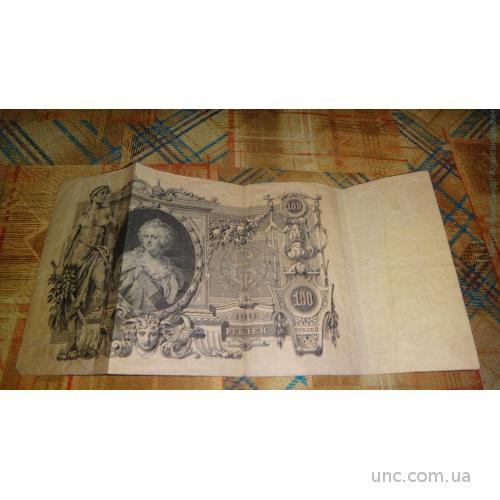Numismatics (57577)
coins
Antique and medieval coins
(343)
Coins of Ukraine
(4779)
Russia and USSR
(10232)
Australia and Oceania
(1037)
Asia
(4821)
Africa
(3361)
Europe
(23637)
North America
(3955)
South America
(1620)
Bank bullion
(0)
Tokens *
(934)
Collections, sets and lots
(96)
Copies *
(885)
Сommemorative medal
(626)
References and accessories
(1104)
Other
(147)
More
Scripophilia (3122)
stocks, bonds
Shares, bonds of Tsarist Russia
(95)
USSR bonds
(364)
Ukrainian stocks and bonds
(196)
Foreign stocks and bonds
(156)
Insurance (policies, certificates, receipts)
(182)
Banking and financial documents
(171)
Invoices, receipts, letters
(354)
Bills, checks, receipts
(177)
Lottery tickets
(1298)
Samples
(13)
Collections
(0)
Stock and bond coupons
(84)
Literature on scripophilia, accessories
(6)
Other
(26)
More
Second-hand books (69938)
books, magazines
Antique editions before 1920
(4577)
Fiction
(13486)
Children's literature
(6006)
Biographies, memories and memoirs
(928)
Culture and art
(2717)
Folklore*
(110)
Music, notes
(291)
Ethics and aesthetics
(30)
Story
(4556)
Scientific and technical literature
(1387)
Social Sciences and Humanities
(516)
Dictionaries
(268)
Encyclopedias
(211)
Directories
(1086)
Instructions and rules
(420)
Educational literature
(2553)
Travel and guides
(1047)
Religion
(237)
Philosophy
(184)
Psychology, self-knowledge
(244)
Journalism *
(108)
Esoterics
(343)
Medicine
(1313)
Sports literature *
(436)
World of Wildlife
(234)
Leisure and hobbies
(367)
Cooking
(476)
Needlework
(245)
Home and interior
(124)
Agriculture
(362)
Newspapers and magazines
(4751)
Engravings and lithographs
(6218)
Maps and plans
(1556)
Posters
(9100)
Bookplates
(230)
Miniature books
(121)
Manuscripts and autographs *
(96)
Libraries and collections
(6)
Publications in foreign languages
(665)
Other
(2333)
More
Old documents (10366)
Pharmacy, prescriptions
(65)
Certificates, certificates, diplomas, report cards
(822)
Archives and collections
(16)
Forms
(543)
Certificates, diplomas, awards
(1256)
Journals, lists, diaries
(43)
Notices, summonses, notices
(63)
Historical documents
(362)
Personal affairs and characteristics
(29)
Notary and legal proceedings
(126)
Document folders
(116)
Patents, copyright certificates
(41)
Letters and telegrams
(633)
Orders and instructions
(73)
Vouchers and sanatorium books
(22)
Certificates and statements
(336)
Certificates
(1996)
Charters and treaties
(59)
Other
(3765)
More
Art and antiques (12599)
Paintings
(5270)
Sculpture (porcelain, bronze)
(2451)
Vases, cups
(898)
Faith and religions
(362)
Forged Products
(14)
Carpets, tapestries
(45)
Boxes, caskets
(280)
Furniture
(290)
Musical instruments
(181)
Writing instruments
(256)
Candlesticks, lamps
(565)
Interior items
(626)
Samovars, bouillottes
(385)
Silver plate
(234)
References
(71)
Other
(671)
More
Faleristics (60492)
orders, medals, badges
Tsarist Russia and the RSFSR until 1923
(87)
USSR 1924-1991
(7300)
Badges
(49860)
Ukraine
(832)
Germany before 1945
(78)
Germany after 1945
(51)
Austro-Hungarian Empire
(21)
Poland
(40)
Mongolia, China, Vietnam, Korea
(13)
Japan and Manchukuo
(41)
Countries of the world before 1945
(23)
Countries of the world after 1945
(262)
Service and memorial signs after 1991
(18)
Sports medals
(273)
Tokens to wear
(59)
Documents for badges and awards
(447)
Collections and prefabricated lots
(10)
Copies
(346)
Pads, strips and parts
(57)
Ribbons for awards
(13)
References and accessories
(229)
Other
(432)
More
Militaria (10574)
Ammunition and equipment
(283)
Hats
(90)
Form
(233)
Cockades
(192)
Collection weapons
(81)
Stripes, chevrons
(7483)
Hunting knives, folding knives, etc.
(221)
Shoulder straps and buttonholes
(692)
Shoulder and lapel insignia
(92)
Military history items
(196)
Buttons
(553)
Literature on militaria
(357)
Other (except weapons)
(101)
More
Other collections (68185)
home stuff
(6731)
Food and drink
(15628)
Games and toys
(4182)
Scale models
(1036)
Advertising
(1927)
Sport
(3123)
Hunting and fishing
(1579)
Tourism and rest
(332)
Theater, music, cinema
(177)
Tobacco and accessories
(803)
Phylumenia (matches)
(485)
Tickets, coupons, subscriptions
(3799)
Calendaristics
(6970)
Cards
(1289)
Office
(342)
Watch
(1706)
Jewelry
(4206)
Clothing and haberdashery
(1021)
Barber
(318)
Flags and pennants
(308)
Stones and minerals
(126)
Antique bricks *
(3)
Seals and seals (sphragistics)
(41)
Scrap and parts containing precious metals
(10)
Records, cassettes, tapes, CDs
(5314)
Photographic equipment and optical devices
(1034)
Mechanical devices
(68)
Radio equipment and tape recorders
(683)
Electronics
(148)
Retro Auto\Moto\Bicycle equipment and spare parts
(108)
Devices and tools
(675)
Accessories for collectors
(58)
Other
(3955)
More
Close
Tsarist Russia 1769-1917
The idea of issuing paper money in Russia appeared back in the 40s of the 18th century from Elizabeth Petrovna, reigning at that time. However, the Senate rejected it, considering it ridiculous that they would pay with some kind of “paper.” When Peter III ascended the throne in 1761, he found the treasury completely empty.
Then, a year later, by his own decree, the emperor ordered the production of bank notes to begin, which would partially replace metallic money in circulation. There were even tickets prepared in denominations of 10, 50, 100, 500 and 1000 rubles. However, the implementation of financial reform was prevented by a conspiracy, during which Peter was killed. Catherine II did not forget about a convenient and simple means of filling the treasury. Within 6 years, she established two banks.



